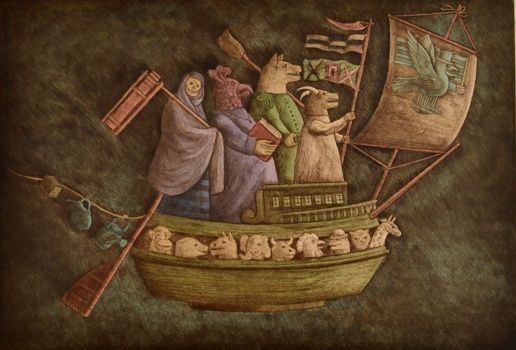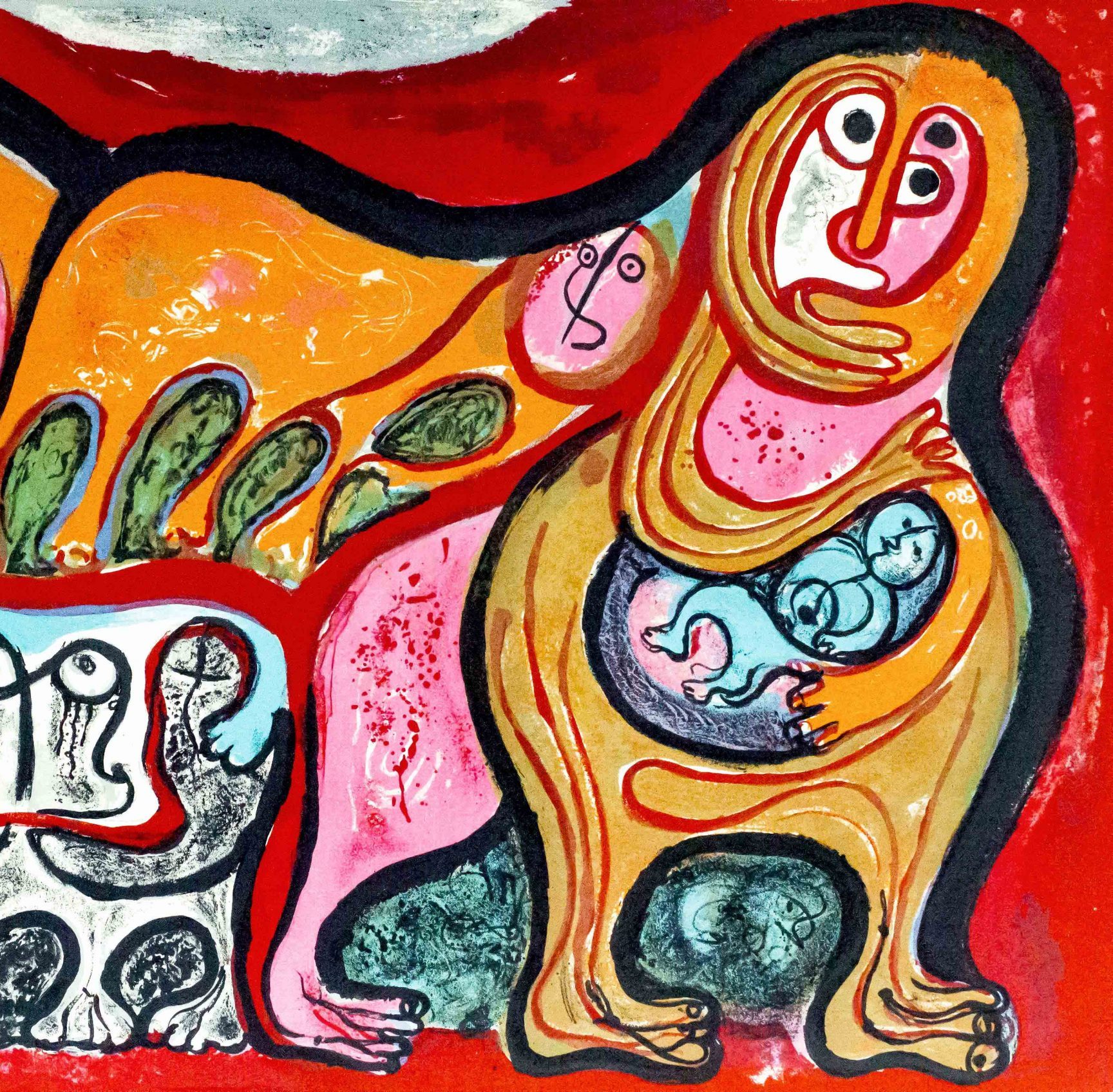More than a technique, a means of concrete expression
In the contemporary proposals offered by Latin American art from the 1960s and beyond, engraving and drawing triumphed as a technique and a means of expression that was equivalent or superior to other technological and experimental media which were being seen in Europe, North America and Japan. This recovery of a traditional technique with more accessible production and capacity for dissemination is a response to the concerns and needs of artists and the public. In this way, they sought to democratise art and place it at the service of citizens, as was already being done through muralism and art in public spaces.
The choice of these techniques must be seen as a declaration of intentions, putting the communicative function of art and accessibility before that of the elitist development that was taking place overseas.
-
 The boat of “who knows”, 1979
The boat of “who knows”, 1979Luis Solari
Ralli Collection © Luis Solari, VEGAP, Málaga, 2024
Xilography
Ed. AP
50 x 70 cm -
 Blue Horse, 1993
Blue Horse, 1993Félix Ángel
Ralli Collection
Serigraphy
Ed. 98/100
94 x 67 cm
Drawing therefore took on great depth and meaning. Engraving became a strong manifestation with identity and the profound development of the technique. The mass reproduction of graphic works made it possible to take art to the most disadvantaged sectors, with the development of the poster being of considerable importance during this period.
As a paradigm of this aspect of Latin America art, works by the Uruguayan Luis Solari, the Mexican José Luis Cuevas and the Peruvian Luis Sifuentes are displayed in this room.
Related artists
RELATED WORKS
ACTIVITIES AGENDA
RELATED PROGRAMS


